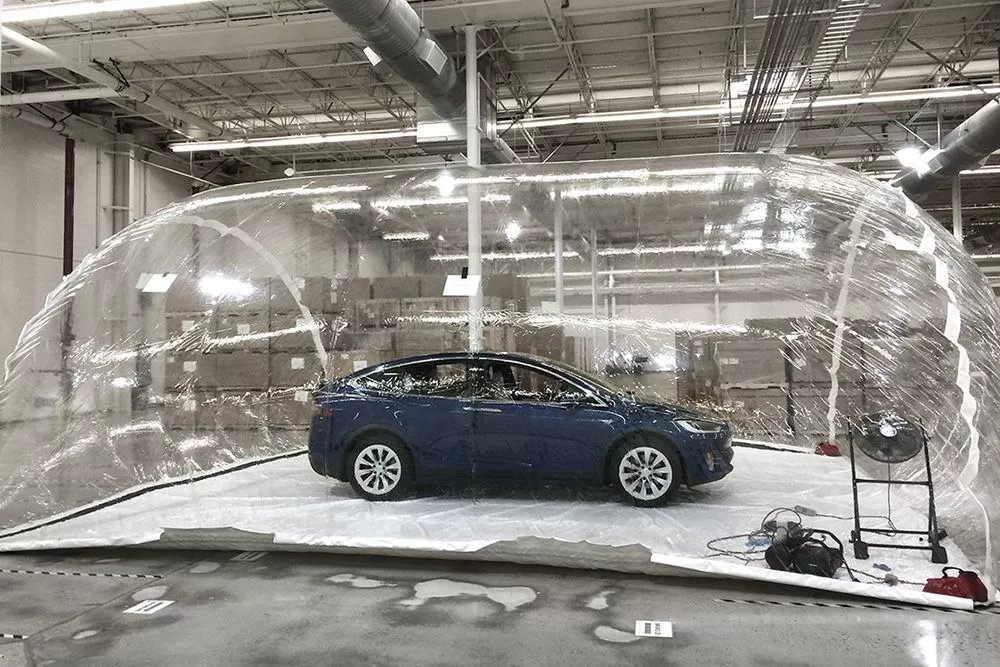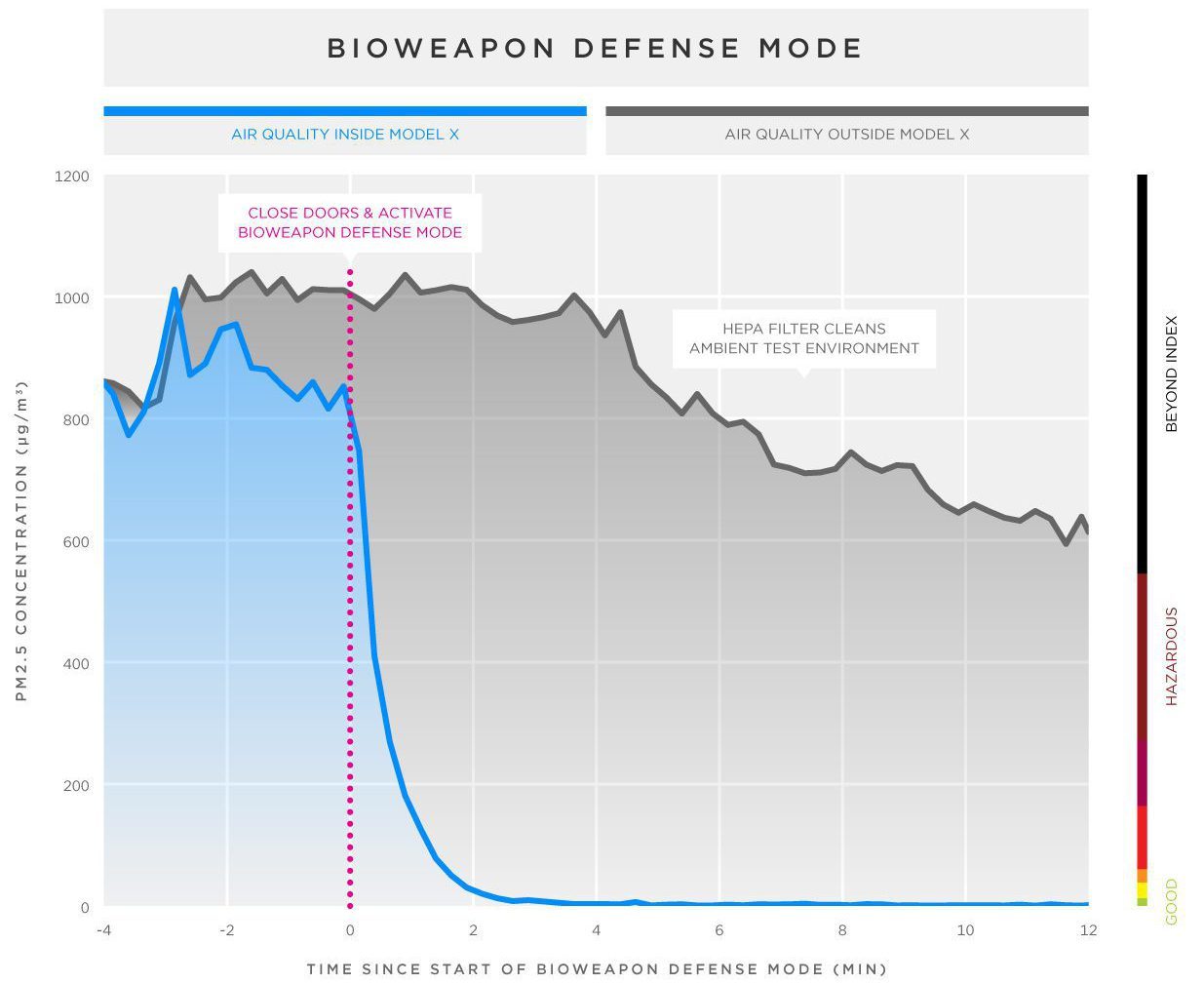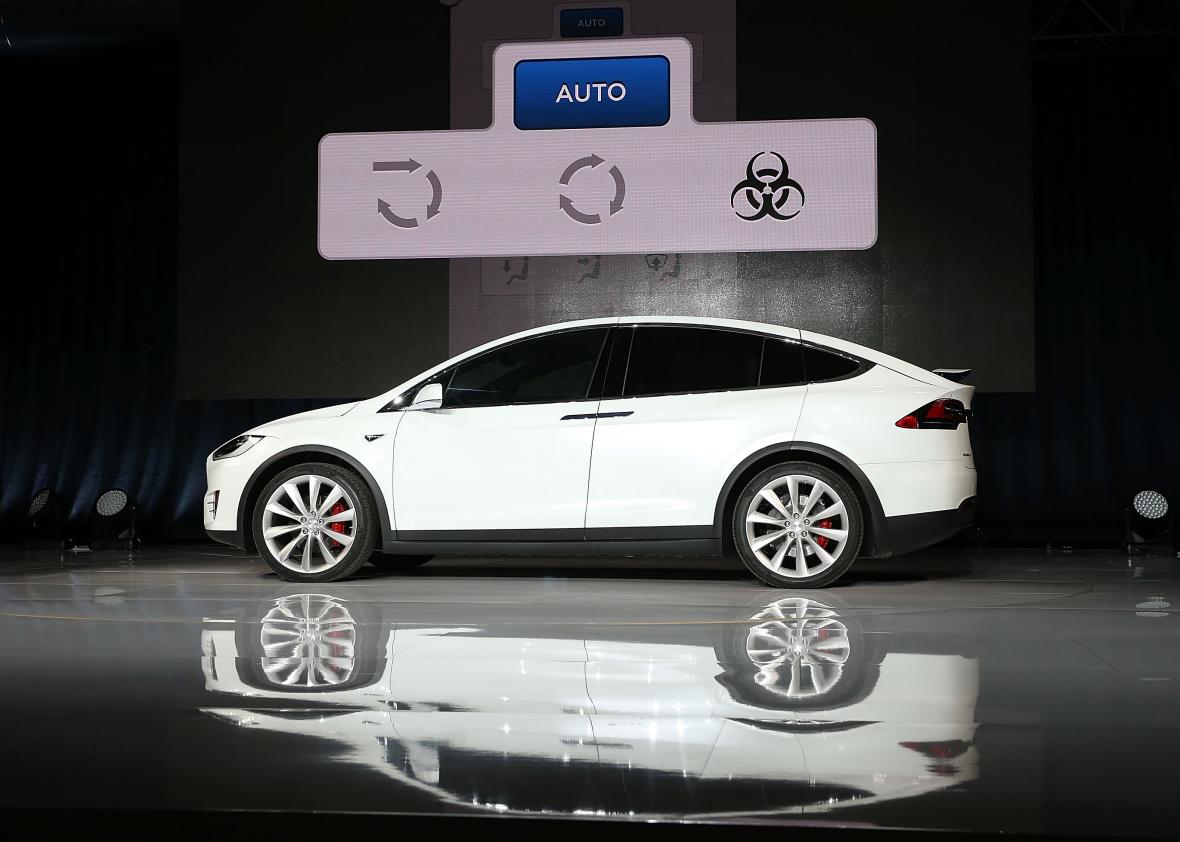Tesla Motors CEO Elon Musk recently reacted to some customer feedback about his car’s air filter system, which the customer said helped his daughter with her asthma.
@elonmusk Thank you & @Tesla for #Bioweapon Defence Mode. Our daughter’s life depended on it. No more asthma attacks in the car. pic.twitter.com/WKXyA0Hxow
— Olof Tenghoff (@OlofTenghoff) 30 May 2018
In his response, Musk tweeted some interesting facts about the ‘Bioweapon Defense Mode’ on Model S and X. Far from being a marketing gimmick, the feature actually does have the strength to withstand a “military grade bio attack”.
A test was conducted two years ago with a Model X being put inside a large biohazard bubble containing more than 80 times the level of pollution compared to the “good” air quality level defined by the EPA.

Here’s what happened when the falcon doors were closed and the ‘Bioweapon Defense Mode’ was turned on:

As you can see, Tesla’s claims are far from being a marketing strategy. Within 2 minutes the air quality inside the car was brought down to an acceptable level, and a few seconds later it was brought down even further into the green zone for air safety.
Other customers have also reported positive results:
It also filters out all the poisonous exhaust fumes from around you while you’re sitting in traffic. I’ve found since I got an electric car that im quite sensitive to exhaust fumes. I get a headache very quickly now. I always have air recirculation on now, especially in traffic!
— Sean Williams (@Seanmmvi) 31 May 2018
Unfortunately, because the filters are quite large, there’s no space for them in the Model 3. That being said, Musk wants to make sure that the Model 3 has the ‘second best’ air filtration systems in the automobile world, second only to the Bioweapon Defense Mode option on the previous models.
Even the Rolls Royce only features basic – but robust – air filters for carbon and particulate matter. On the Model X and Model S, however, there are additional filters for acid and alkaline gases, and even a CO detector that can automatically switch to recirculation.
Technically speaking, it’s not completely immune to bioweapon attacks. That’s because viruses are also considered bioweapons, and since their size is typically in nanometers (one-billionth of a meter), the HEPA filter’s 0.3 micrometer limit will pose a problem. However, bacterial attacks from Anthrax, for example, can be handled by the system because they’re generally larger than that.
So, technically, it’s not a completely guaranteed bioweapon defense system, but more of a chemical defense system with biodefense capabilities. Still, it’s far more advanced than anything you’ll find even in a luxury automobile.



